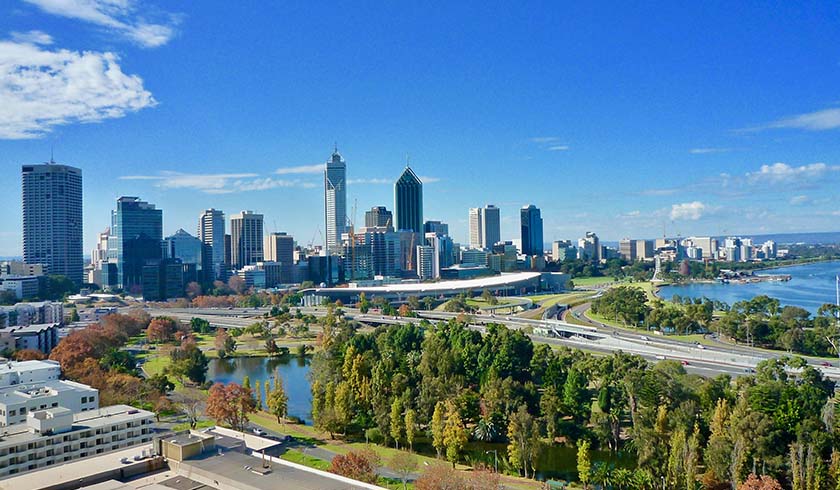Perth commercial property market rebounds post-COVID
Demand for commercial property across Perth, from both local and interstate buyers, is booming, signalling Western Australia’s re-emergence from the COVID-19 crisis.

As Australia’s economy makes strides towards recovery, Western Australia is getting on the front foot and displaying outstanding rebound across its property market.
Ray White’s latest Between the Lines commercial research for November 2020 revealed that Perth’s retail strips have been holding their own as the world transitions to a “new normal”, with two strips recording a reduction in vacancies over the last 12 months.
With a low 2.41 per cent vacancy rate, represented by just one vacant shop, the Napoleon Street retail strip in Cottesloe has seen the lowest vacancy rate of the surveyed areas.
“While this is a fantastic result, it bucks the trend in many ways regarding the way in which consumers are interacting with retail stores,” said senior property adviser at Ray White Commercial (WA) Brett Wilkins.
“This location has the largest proportion of clothing and soft goods, which were able to trade during much of the year, despite the strong movement towards online shopping for these types. For many retail locations, food remained the constant during COVID-19, while the terms of trade may have changed, the ability to remain active via takeaway and delivery ensured some vibrancy to the strip,” Mr Wilkins said.
Similarly, Bay View Terrace retail precinct in Claremont was seemingly undeterred by COVID-19, with vacancy rates dropping to 4.46 per cent over the last 12 months.
“This strip, which is known for its fashion, has been able to keep shops open, with many local retailers still able to operate during lockdowns and reporting good results online this year.”
Meanwhile, Perth’s celebrated retail strip “Subi”, market of Rokeby Road, suffered minimal COVID impact, with the rate currently at 14.99 per cent, just 25 basis points higher than last year’s results.
Of the surveyed strips, Rokeby Road is one of the largest, with 113 shopfronts, 15 of which remain vacant.
“With a strong population base here, Rokeby Road is expected to perform better by the general marketplace.
“Anticipated new developments, including the under-construction residential development ‘ONE Subiaco’ by Blackburne, as well as the future development of Subiaco East around the football oval and PMH, may cause some short-term disruption to the strip [but] will re-inject vibrancy to this location,” said Mr Wilkins.
Victims of the lockdown
While most retail strips in Perth thrived in the middle of the pandemic, others were not so fortunate, ultimately falling victim to the adverse effects of the lockdown.
Oxford Street in Leederville yielded the most standout results this year as its vacancy rate consistently grew from zero in 2017 and ultimately peaked at 14.63 per cent this year.
Of the 47 shops across the area, 10 are now unoccupied, according to the report.
Mr Wilkins said: “Vacancies have been felt across all retail types, all slightly reducing their proportion at the expense of a growing vacancy. However, many of these changes were already occurring prior to the pandemic starting a trend of reducing occupancy, notably in the clothing and recreation categories.”
Similarly, Mt Lawley’s Beaufort Street retail strip saw a significant increase and vacancy, consistent with historical results of having the highest vacancies of the surveyed areas.
Vacancy rate was recorded at 15.41 per cent, representing 15 vacant shops. “However, this is down on last year’s peak result of 16.79 per cent,” according to Mr Wilkins.
“There continues to be churn in this market, with continued movement out of clothing and soft goods, and growth in the services sector. This is a more traditional trend we’ve been seeing in retailing across the country – albeit in contrast to some Perth retail strips we have monitored.”
Perth’s commercial property market
Ray White Commercial head of research Vanessa Rader said that while the commercial property market has undeniably seen a decrease in occupation and demise of some businesses, which ultimately resulted in higher vacancy rates, Perth’s ability to rebound has been outstanding.
In fact, 2020 was tipped by many as a year of prosperity for Western Australia as its sound economic fundamentals and an increased output from the mining sector continue to contribute largely to Australia’s GDP.
Further, amid the pandemic, the state has kept infection rates low and ensured economic growth by implementing stringent border control.
“Employment, while affected by lockdowns, has fared well, which has translated into strong residential property results, with an uptick in both activity and values.
“We see some markets and asset classes faring better than others, but the strong demand for commercial property across Perth from both local and interstate buyers is testament to the anticipated longevity of commercial property in the state,” Ms Rader concluded.
